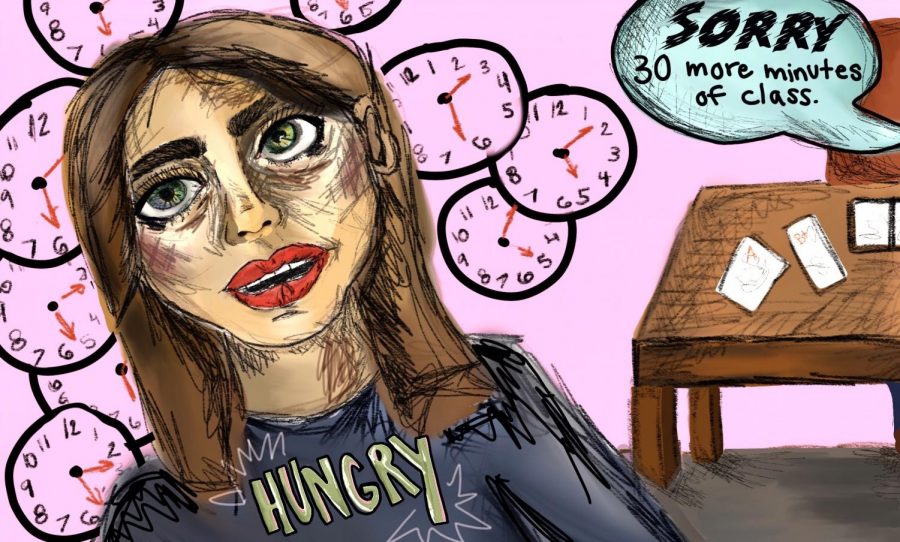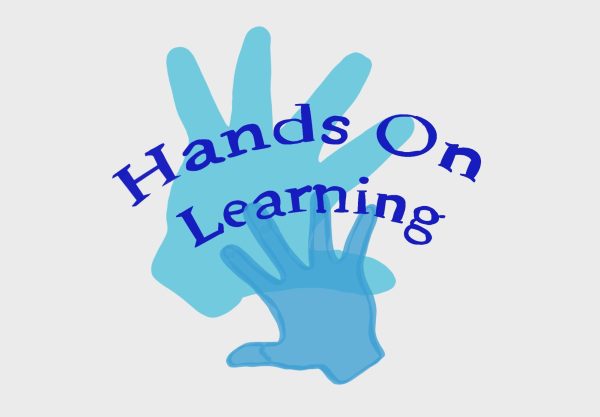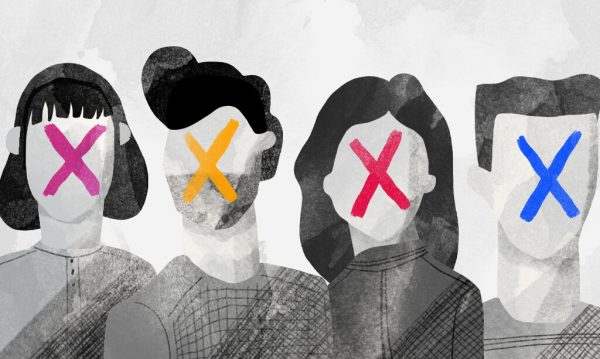Students Should Be Allowed To Eat Snacks In Class
Eating In Class Can Promote Students’ Learning and Productivity
If students are hungry during class, they may become easily distracted.
Breakfast is the most important meal of the day. In order to last a few hours before snack and avoid being hungry, one should be fueled by eating a full meal early in the morning. However, when students stay up late on a school night, they require a few more minutes of sleep in the morning to try and make up for lost time. The issue is that now, there is no time to eat a full meal and snack is not for another two blocks.
Snacking in classes should be allowed. For most students, there is not enough time in the morning to eat a whole meal. Others may wake up not hungry but become hungry within the early hours of the school day. Restraining the time in which students eat demonstrates a belief that their bodies need to be energized and well fed is less important than
feeding the brain with knowledge. Many students experience feelings of stress, angst or even anger when unfed. If students eat and become happier, learning would be more efficient, as students would feel content and more ready to learn. Students would also be able to focus more, as they would not be distracted by waiting for snack time to come around.
Eating snacks is not harmful. In fact, many teachers have snacks with them that they eat between classes. If students did not have to change what class they are in, similar to most teachers, then they could eat a snack during passing time. But eating in the hallways is stressful when walking amongst many others going in all different directions.
Despite the belief that snacking is distracting and can lead to an unproductive class, the grumble of one’s stomach and the embarrassment that may arise from loud noises outweighs that. Although there is hesitation due to students with allergies and messes afterwards, students in high school have to be responsible enough to recognize the foods that they are allergic to and clean up after themselves to prevent further issues.
As snacktime at Walpole High School is 10 minutes and lunch is around 25, there is seemingly enough time for students to purchase a snack and eat it. However, there are always large lines that deduct from the time given, and there is always a congestion of students in the hallway right outside the guidance offices and flowing into the cafeteria which takes away time as well.
In conclusion, eating a snack should be permitted unless a teacher specifically asks for snacks to be put away due to a conflict. There are circumstances in which snacking can be deemed as a distraction. Many teachers have different viewpoints on when or what students should be able to eat, but teachers must also recognize that students are busy and eating a simple snack is not as easy as it seems. However, when a student needs to eat, they need to eat.

Danielle Abril, Class of 2021, is the Opinion Editor for The Searchlight. At school, she is captain of the swim and dive team, a member of NHS and the...

Charlotte Clarke, class of 2021, is the Graphics Editor for The Rebellion. At Walpole High School, she runs cross country and track and is involved in...












Christopher S • Sep 16, 2022 at 5:21 am
I do after hours cleaning at k-12 school, the kids eat snacks in class and make an absolute mess, its not uncommon for me to get stuck staying a hour or two after my shift do to cleaning up spills vacuuming corners for crumbs, etc.
The issue being that children aren’t taught to clean up after themselves, a habit that is best formed early. Mind you that the school is state funded, meaning every hour i have to stay over is that much more it costs the tax payer, as does the extra 2 weeks of work it creates for me over summer . So until we start teaching kids responsibility and respect again, they can wait between meals
Bob Dillan • Feb 8, 2022 at 8:42 pm
This article helped me for my arguementative essay in 6th grade
Madisen Goracke • Apr 28, 2021 at 11:26 am
Yes! I totally agree with all of this